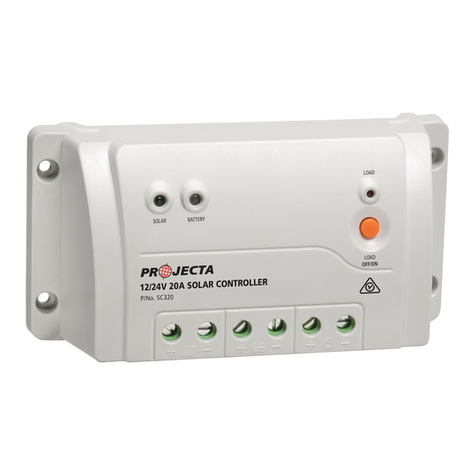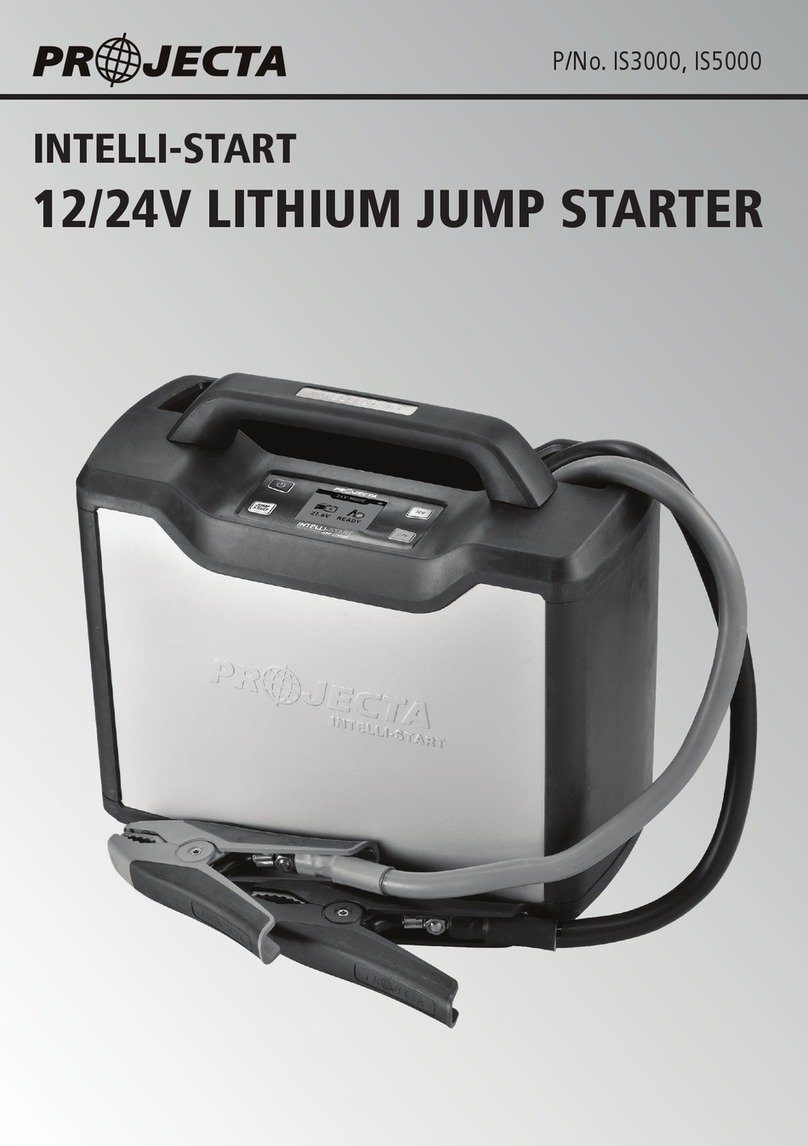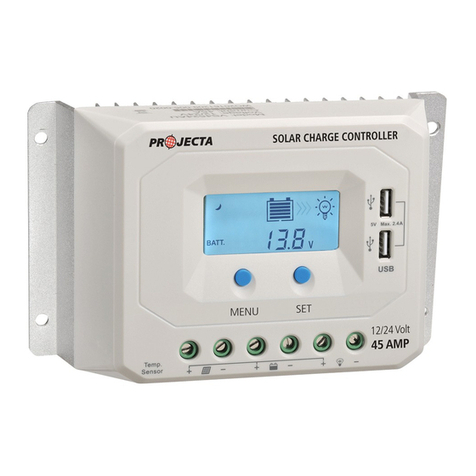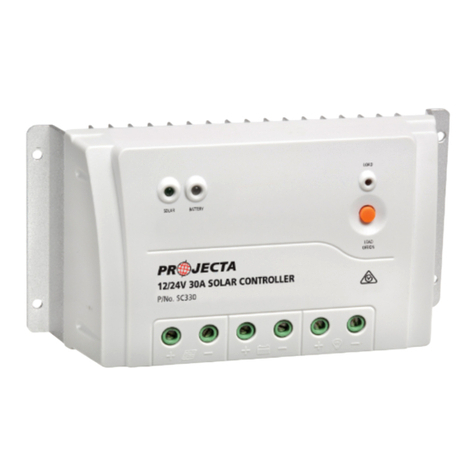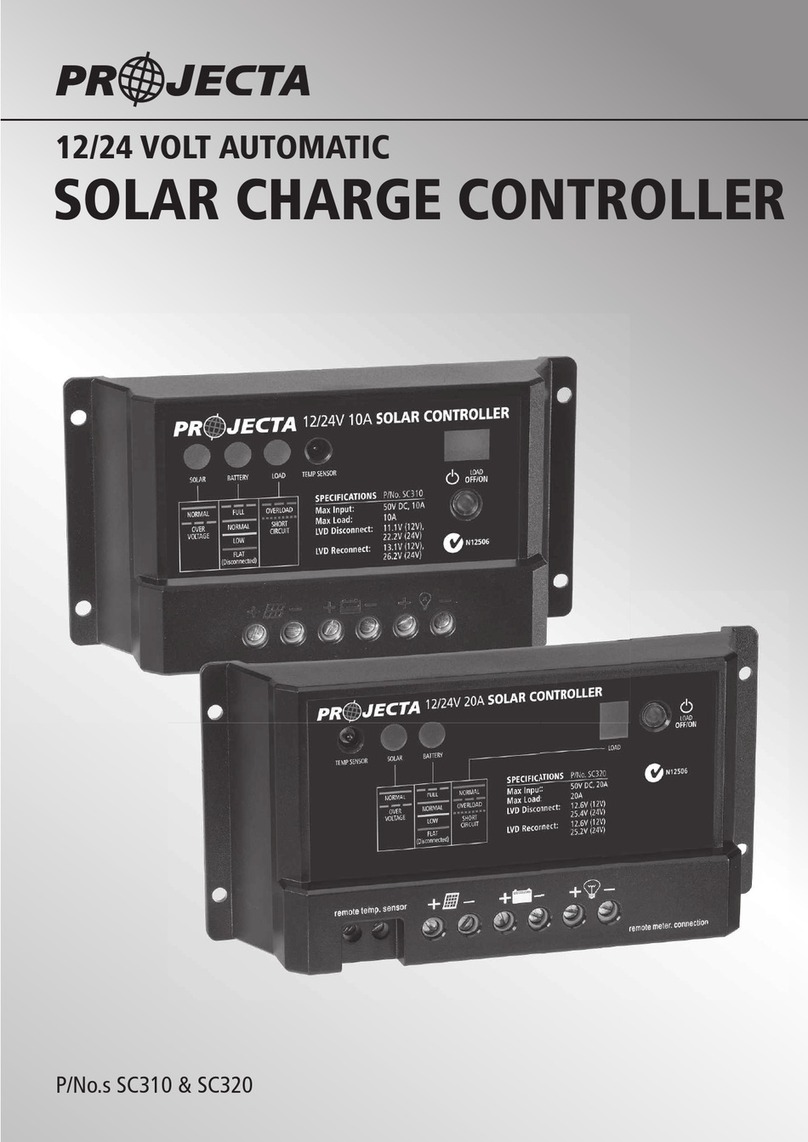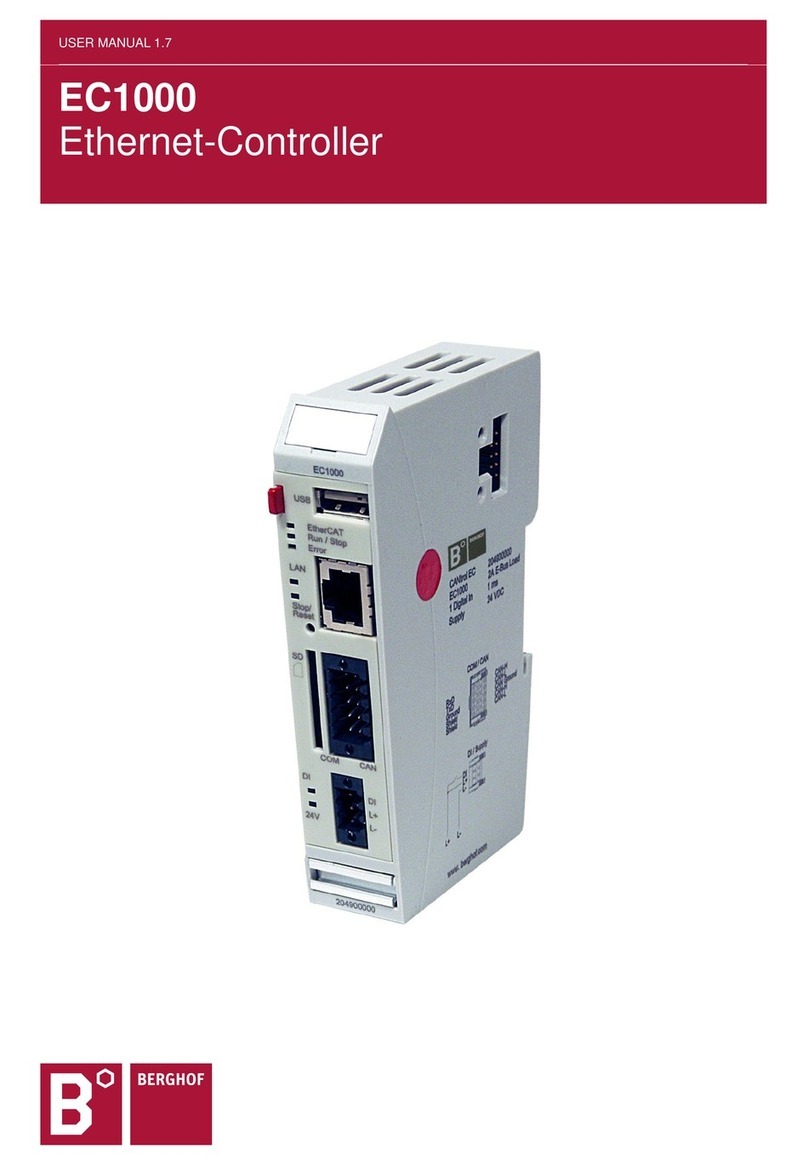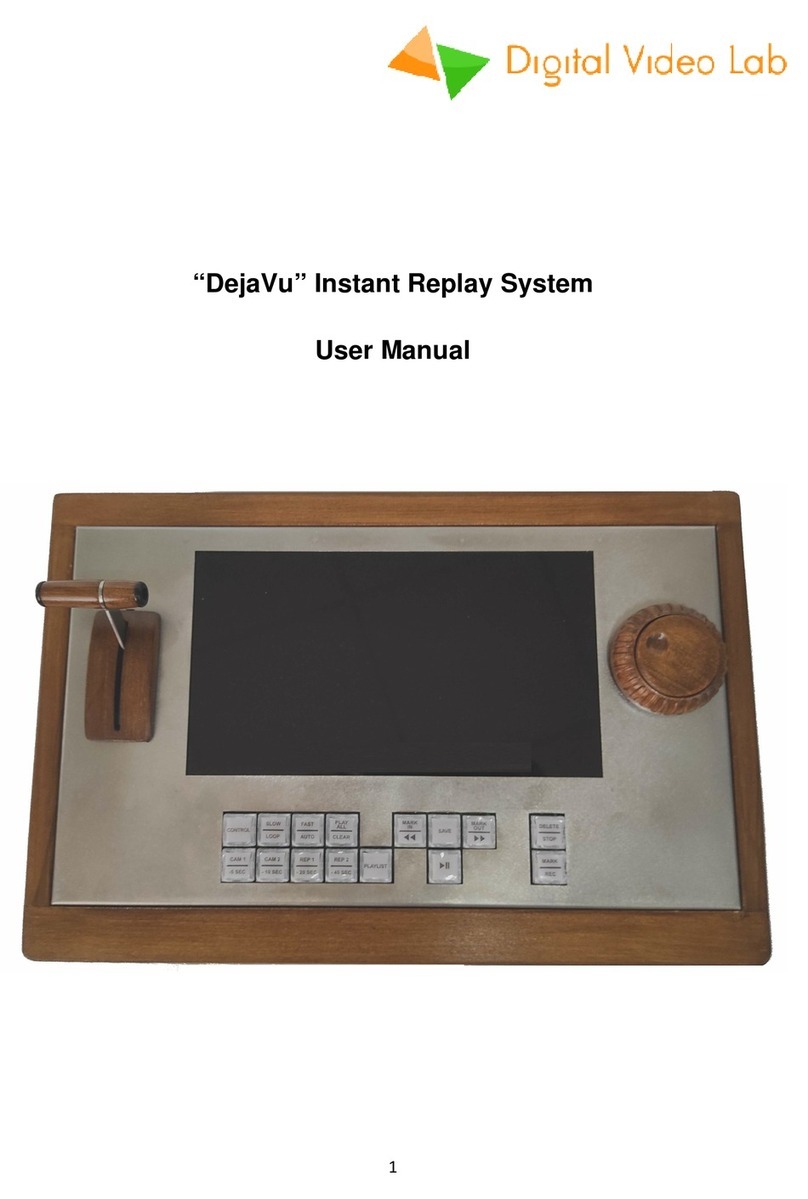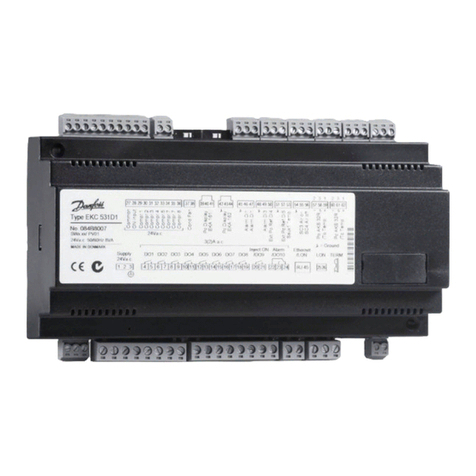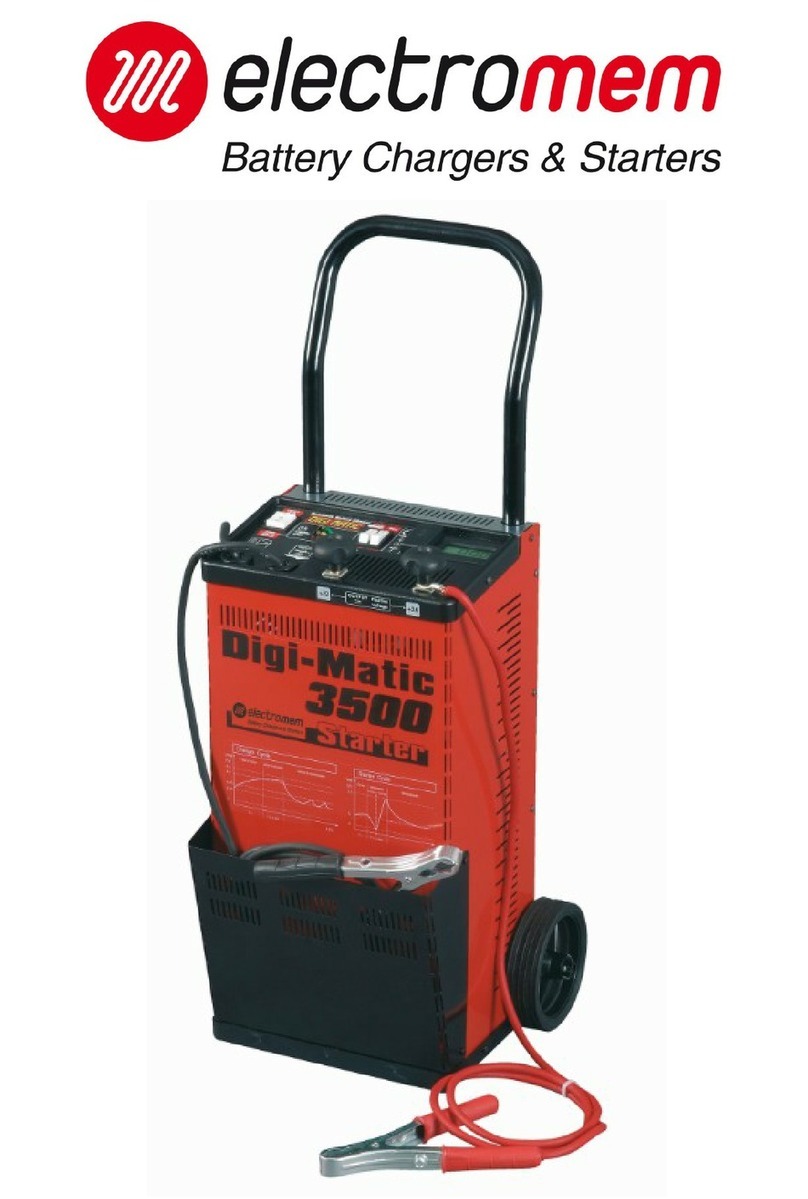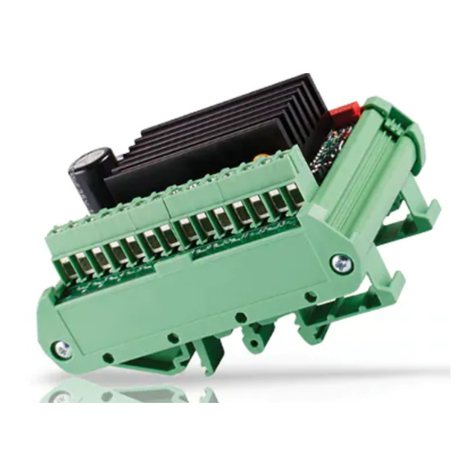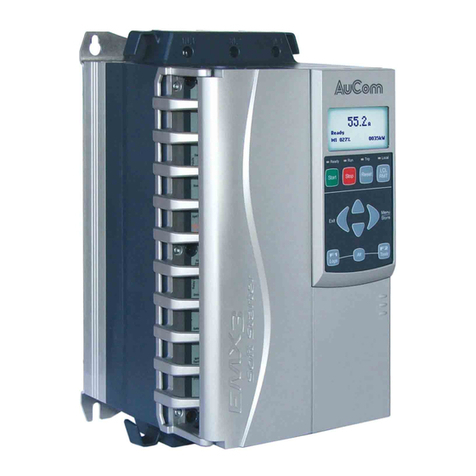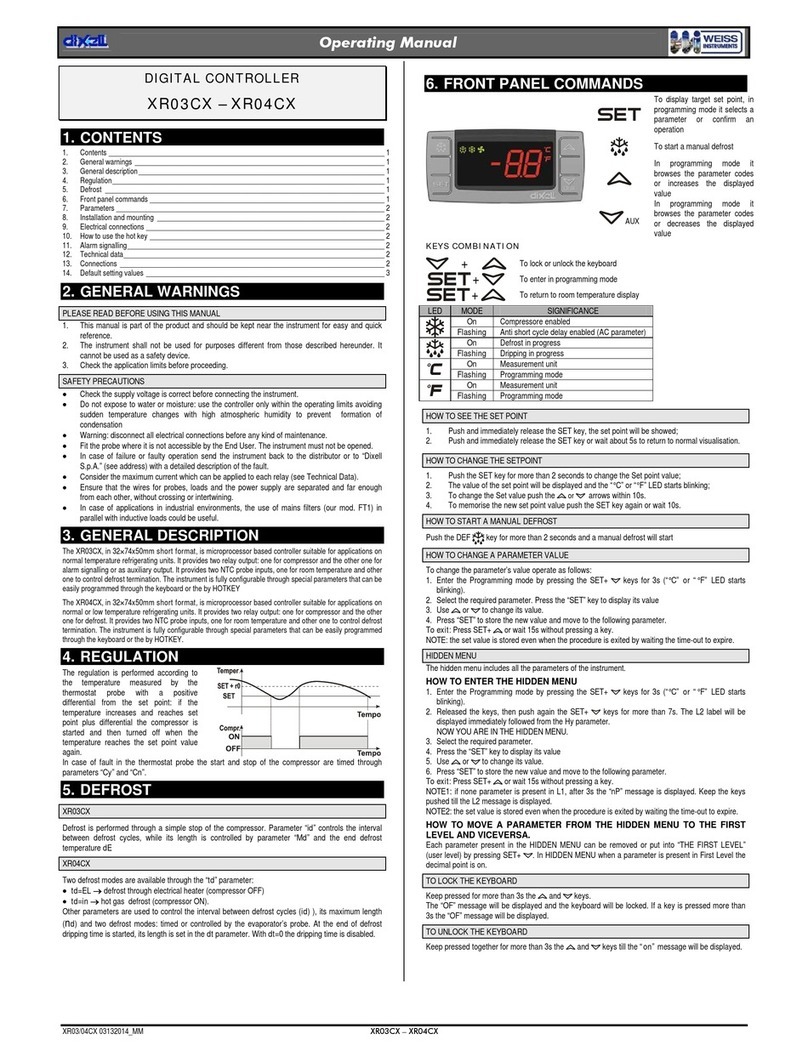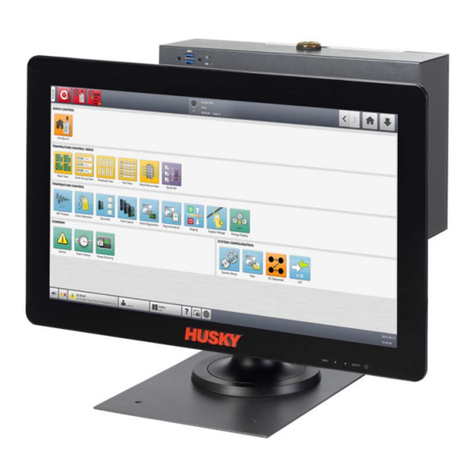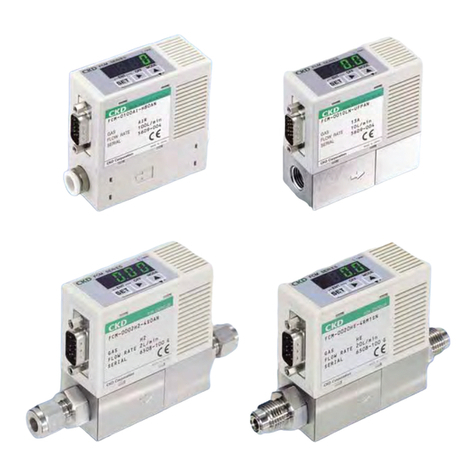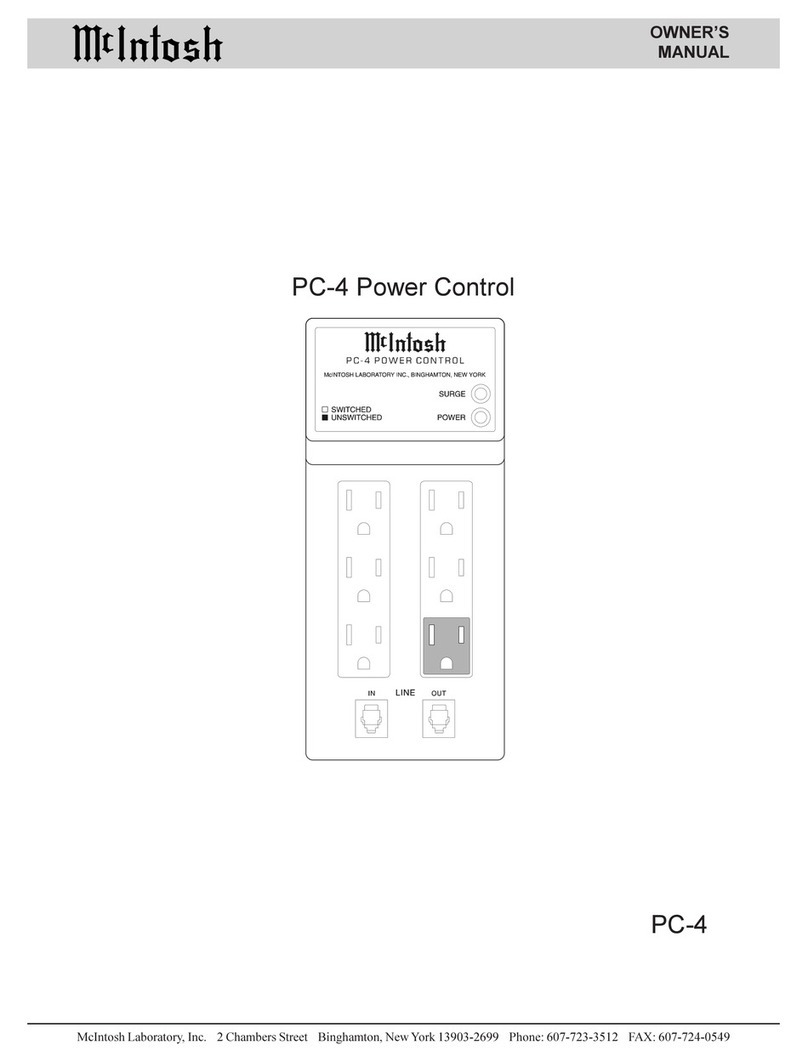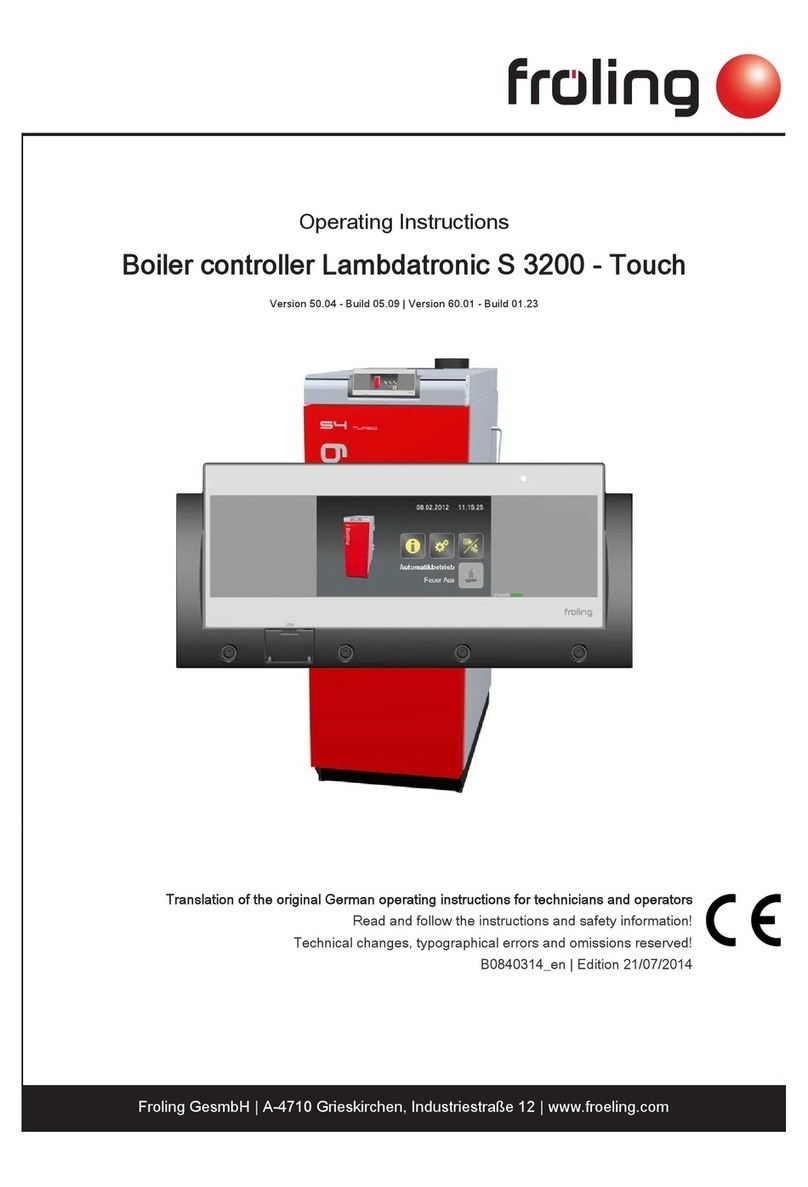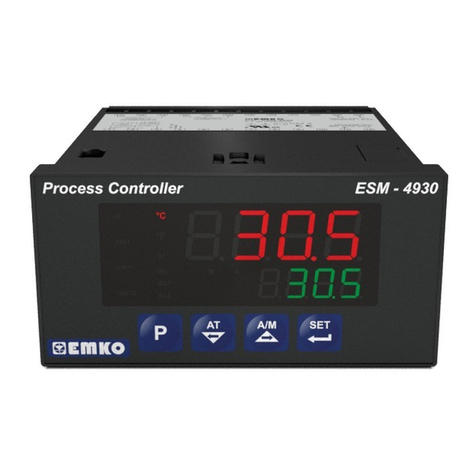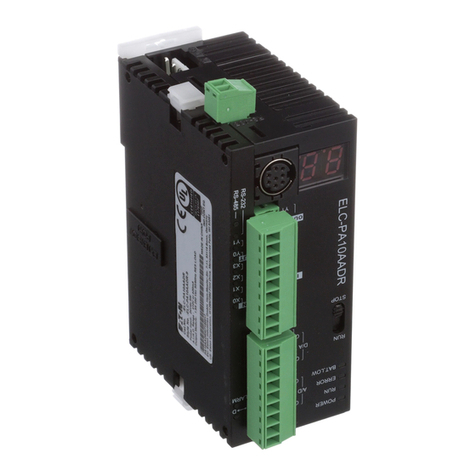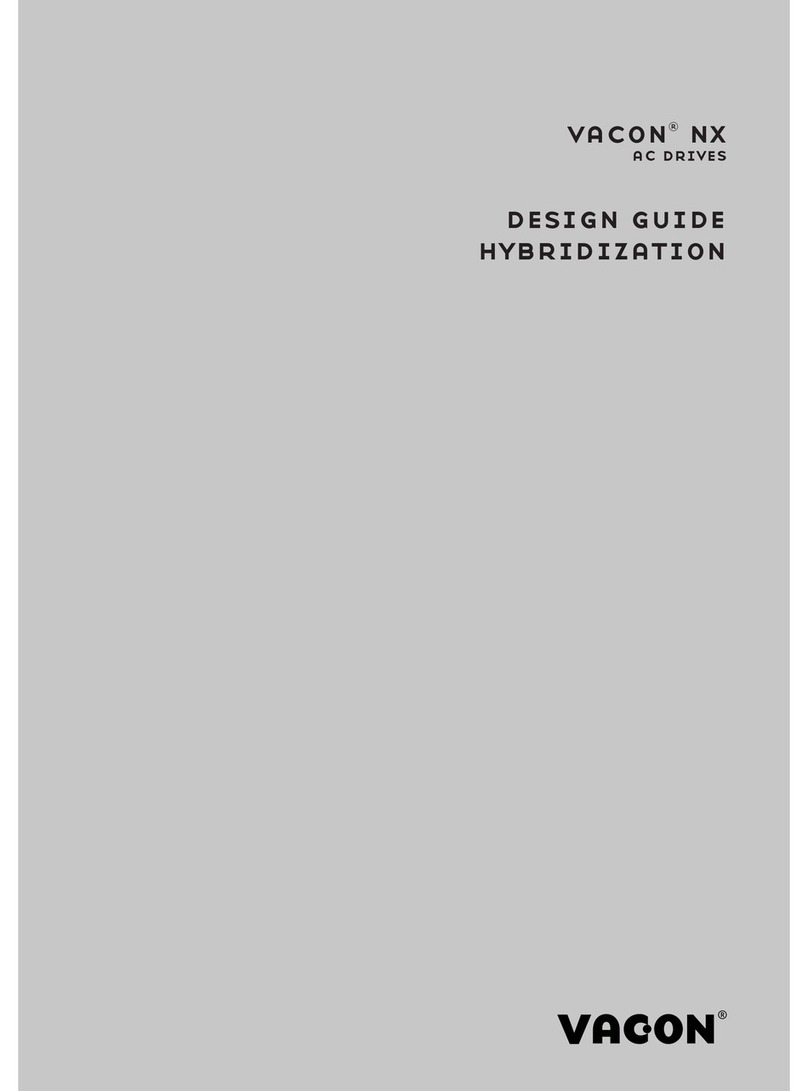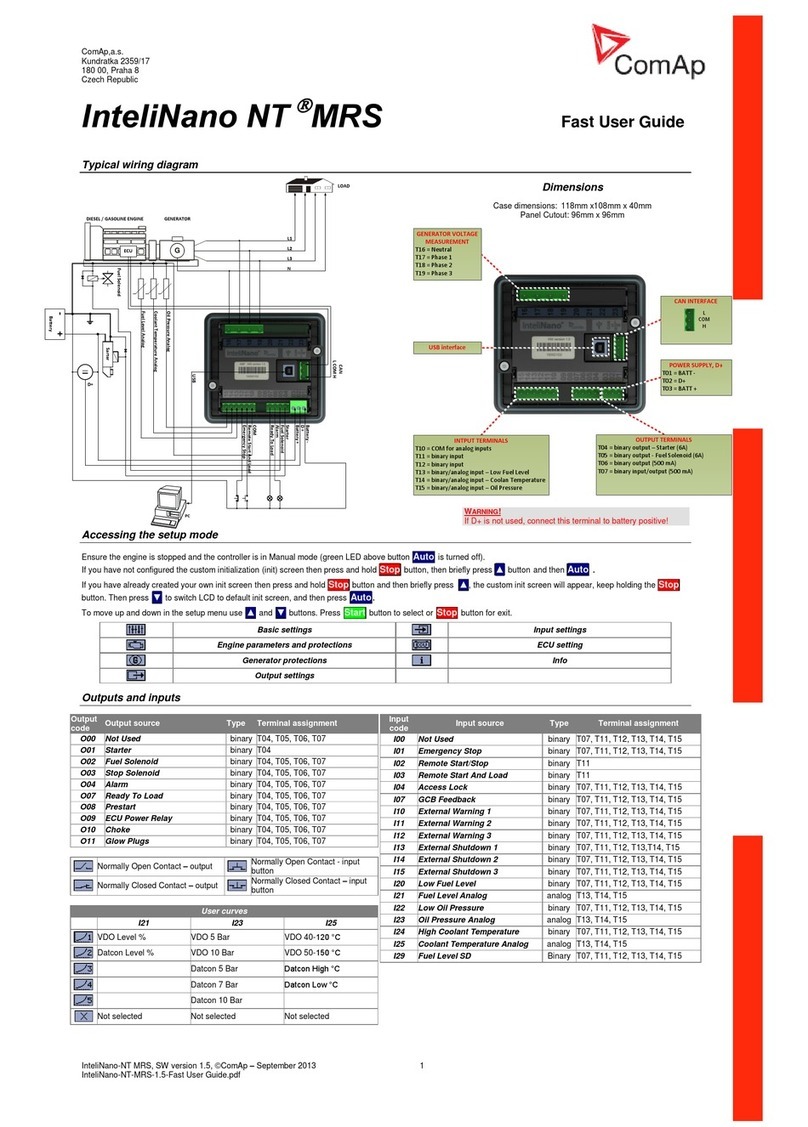Projecta INTELLI-RV PM200 User manual

P/No. PM200
12V POWER MANAGEMENT SYSTEM
INTELLI-RV

2
IMPORTANT SAFETY INFORMATION
Please read this manual thoroughly before use and store in a safe place for future reference.
WARNINGS
• Explosive gases. Prevent ames and sparks. Provide adequate ventilation during charging
• Before charging, read the instructions
• For indoor use. Do not expose to rain
• For charging Lead Acid and LiFePO4batteries only (of the size & voltage specied in the
specication table)
• Always charge the battery on the correct voltage setting. Never set the charger to a higher
voltage than the battery specications state
• Disconnect the 240V mains supply before making or breaking the connections to the battery
• The battery charger must be plugged into an earthed socket outlet
• Connection to supply mains is to be in accordance with national wiring rules
• Do not attempt to charge non-rechargeable batteries
• Never charge a frozen battery
• If the AC cord is damaged, do not attempt to use. It must be replaced or repaired by a
qualied technician
• Corrosive substances may escape from the battery during charging and damage delicate
surfaces. Store and charge in a suitable area
• Where possible, ensure all vehicle accessories including lights, heaters, appliances etc. are
turned off prior to charging
• This charger is not intended for use by persons (including children) with reduced physical,
sensory or mental capabilities, or lack of experience and knowledge, unless they have been
given supervision or instruction concerning the use of the appliance by a person responsible
for their safety
• Young children should be supervised to ensure that they do not play with the appliance
• If the recreational vehicle is to be put in to storage without power, please turn off the
BATTERY MASTER SWITCH. If the recreational vehicle is to be put in to long term storage
without power, disconnect ALL cabling from the battery

3
CONTENTS
1. SYSTEM INTRODUCTION – PM200 ........................................................................................... 4
1.1 Features 5
1.2 LED display 6
1.3 Water tank probes 6
2. KEY FEATURES AND FUNCTIONS ............................................................................................... 6
2.1 Multiple inputs 6
2.2 Battery charger of stationery/service battery 6
2.3 Power supply mode 7
2.4 PWM solar charge controller 7
2.5 Voltage charging relay (VCR) 7
2.6 Categorised outputs 8
2.7 Battery low voltage protection 8
2.8 Manual battery switch 8
2.9 Silent mode 8
3. STRUCTURE AND INSTALLATION ............................................................................................... 9
3.1 PM235 Transformer Unit 9
3.2 LED display 10
3.3 Water tank probes 11
3.3.1 PMWS400 water tank probe 11
3.3.2 PMWS200 water tank probe 11
4. WIRING ....................................................................................................................................... 12
4.1 Material 12
4.2 System schematic 12
4.3 Preparation 13
4.4 Connection 13
5. DISPLAY ...................................................................................................................................... 14
5.1 PM200 master power unit 14
5.2 LED display 15
6. OPERATION ................................................................................................................................. 16
6.1 Conguration on PM200 16
6.1.1 Battery capacity and battery type 16
6.1.2 Select Battery Switch Local / Remote 17
6.2 Maintenance 17
7. TROUBLE SHOOTING .................................................................................................................. 18
7.1 LCD display on PM200 Unit 18
8. SPECIFICATION ........................................................................................................................... 19
8.1 PM200 Basic 19

4
1. SYSTEM INTRODUCTION – PM200
PM200 is designed for use in caravans or motor homes. The unit has integrated functions such as: battery charger, distribution blocks,
PWM solar charge controller, charging relay, battery low voltage protection, water pump controller, water tank indicator and LED Display.
The PM200 is designed for an easy installation and a user-friendly interface.
SYSTEM COMPONENTS:
1. PM235 Master power unit
2. PMSWLED-2 LED display
3. PMWS200 or PMWS400 Water tank sensor (Not supplied)
4. Cables (Refer to Chapter 4.1 or the cable list)
Figure 1 System Components for PM200
P/No. PMSWLED-2
Waste Water Tank Probe
(Optional)
P/No. PMWS200 or PMSW400
Tap Water Tank Probe
(Optional)
P/No. PMWS200 or PMSW400
Fresh Water Tank Probe
(Optional)
P/No. PMWS200 or PMSW400
Battery Temperature
Sensor P/No. PMBS
Solar
Service Battery
Starter Battery
P/No. PM235 Transformer Unit

5
1.1 Features
• Smart battery charger 12V 35A (30A for charging current)
– Multi stage adaptive charging algorithm
– Active Power Factor Correction (PFC) charging
– Temperature compensation charging
– Voltage compensation charging
• Float charge for starter battery
• Solar charge controller (PWM), 30A
• 14 built in fused outputs
• Built in Voltage Sensing Relay
– 12V 60A Continuous
– 12V 100A Peak for 30mins
• Battery low voltage protection
• Built-in battery switch to isolate the battery when in storage
• Built-in shunt for precise battery measurement
• 1 water pump control with up to 3 connections for water sensors
• Dual control cooling fan
– Temperature Control
– Load Control
• Spring terminal and screw terminal
• RS-485 compatible
Figure 2 System Schematic
10A
K4
F5 L11+
10A F6 L10+
LOAD -
LOAD11 for PUMP
10A F7 L9+
10A F8 L8+
10A F17 L14+
10A F16 L13+
10A F15 L12+
15A F9 L7+
10A F10 L6+
10A F11 L5+
15A F12 L4+
10A F13 L3+
15A F14 L2+
15A F1 L1+
L13-
L12-
L11-
L10-
L9-
L8-
L7-
L6-
L5-
L4-
L3-
L2-
L14-
L1-
K3
D+Input
Remote Switch
Dip Switch Load switch
35A
F4
F3
+
-PWM
MCU
+
-
+
-AC/DC
+
-
+
-
+
-
VCR
Battery switch
35A
K1
Solar In
AC In
Service
Battery
Starter
Battery
Step
Slave charger relay
K2
LOAD4~10 for
Class B Load
LOAD12~14 for
Class B Load
LOAD 2~3 for
Class C Load
LOAD1 for
Class D Load

6
1.2 LED Display
Figure 3 PMSWLED-2 switch panel
Table 1 Front panel of PMSWLED-2
Table 2 LED indication of PM235
1.3 Water Tank Probes
A maximum of up to 3 probes can be monitored by the system.
NOTE: Always check the probe required for the water tank before purchase. If the probe included does not t the water tank,
please contact the seller.
There are 2 probe styles:
PMWS200:
• Side installation
• Suitable for water tank
• Depth >200mm
Figure 5 PMWS400Figure 4 PMWS200
PMWS400:
• Side installation
• Suitable for water tank
• Depth 300-400mm
1
4
2
5 6 7 8
3
NOLABEL DEFINITION DESCRIPTION
1Water Pump DC load control Load control, on/off control
2Night Mode Scene mode Refer to 2.10
3Load DC load control Load control, on/off control. Refer to 2.7
4Fresh Water Tank Sensor Detect the level of fresh water tank
5Tap Water Tank Sensor Detect the level of tap water tank
6Waste Water Tank Sensor Detect the level of waste water tank
7Service Battery SOC Detect the state of the charge of service battery
8Service Battery Voltage Detect the voltage of service battery
NOLABEL COLOUR STATUS DESCRIPTION
1Main Green
ON Battery charged or power supply mode
Flash Battery charging under grid electricity
OFF NO AC input
2PV Green
Solid Battery charged
Flash Battery charging under solar energy
OFF NO solar input / AC charging / Aux charging
3Fault Red
ON Short circuit
1 Flash Service battery voltage low
2 Flash Service battery voltage high
3 Flash Over temp (heat sink)
4 Flash Bulk charge timeout
5 Flash VCR anomaly
6 Flash Over temp (environment)

7
2. KEY FEATURES AND FUNCTIONS
2.1 Multiple Inputs AC MAINS x x
SOLAR x x
STARTER
BATTERY x x
CHARGING
PRIORITY
AC MAINS AC MAINS COMBINED
Table 3 Source priority
2.2 Battery Charger Of Stationery/Service Battery
The charger automatically starts when the appropriate qualied power is connected, either from AC mains, alternator or solar.
With multiple charging stages (soft start – bulk – absorption – oat – recycle), PM200 is designed to fully charge a battery quickly.
To guarantee the optimal charging for batteries of different states, the PM200 features a Microprocessor-controlled charging
algorithm.The Float and Recycle charging programs guarantees that the battery condition does not change despite being
connected for a longer period.
When the charger is at oat Stage, if input a new source (AC Mains or Solar), the charger will return to the BULK stage.
lcc is the rated current
.
5 hours 1 hour5mins
SOFT START
STAGE
CURRE
NT
VOLTAGE
BULK ABSORPTION FLOAT RECYCLE
1 2 3 4 5
1
2
CHARGING
ALGORITHM
SOFT START
Increases battery life by gently starting to
charge the battery at 50% of bulk
BULK
Reduces charging time by delivering
maximum charge to set voltage
ABSORPTION
Ensures a full charge to the battery without overcharging
FLOAT
Float charge maintains the battery at 100% charge
RECYCLE
3
4
5
11.5V
lcc
1/2lcc
Figure 6 Charging Algorithm
PM200 master power unit may have multiple charging
sources at any one time. These sources include AC mains,
solar and starter battery (vehicle).
Charging priorities are listed within the table to the right.
Battery Temperature Sensor
The PMBS (Battery Temperature Sensor) supplied with PM200, measures the temperature of the battery and automatically adjusts, in real time, to
charge the battery properly at compensation rate of – 4mv±10%/°C/cell. In case PMBS is not present, the PM200 will use 25°C as default.
Voltage Compensation Charging
With a voltage sensor PMBS the PM200 can, if required, automatically adjust its output to compensate the voltage drop caused by a cable.
This assures the right voltage is being delivered for optimal charging.
Adjustable Charging Capacity
Users can adjust the charging current by specifying the battery capacity. The charging current is set at threshold rate of 10% the of
the battery capacity (I = 0.1C) by default.
Lithium Battery Charging
The PM200 can be congured to charge lithium batteries. With lithium batteries, the max charging current will automatically be set at
30% of battery capacity (Imax=0.3C).
2.3 Vehicle Battery Charger
Along with a powerful charger for service battery, PM200 offers a oat charge of up to 3A to keep the starter battery charged, whether
connected to the AC main or PV.When starter battery is less than 12.4V, the PM200 starts charging after 30 minutes delay and stops
charging when voltage reaches 12.8V.
2.4 Power Supply Mode
If no battery is attached to PM200 unit, it will work as a power supply automatically with a 12.8VDC output.

8
Battery Switch Load Switch
Step
Fuse 15A Fuse 10A
Fuse 10A
Load of Class D Load of Class C
Load of Class B
Load of Pump
Fuse 10A
Fuse 10A
Fuse 10A
Fuse 10A
Fuse 10A
Fuse 10A
Fuse 10A
Fuse 10A
Fuse 10A
Fuse 15A
Fuse 15A
2.8 Battery Low Voltage Protection (BLVP or commonly known as an LVD)
The PM200 transformer unit has a built-in low voltage protection relay. It will disconnect the load once the battery voltage drops below
the threshold voltage.The default setting is 10.5VDC.
NOTE: Class C and Class D loads remain active.
2.9 Manual Battery Switch
The PM200 unit offers a convenient way to switch off the output of the on-board service battery. It protects the service battery from
being drained by the electronics on board, completely isolating the battery. PM200 unit also supports a remote manual battery switch.
Before using the remote switch, ensure the ‘switch selector’ is set to ‘Remote’.The switch is only effective when the system has no
other energy resource for the load except the battery.
2.10 Silent Mode
In Silent Mode, the backlight of the LED Display and the fan will be turned off or decreased in speed.
Table 4 Categorised outputs denition
CATEGORY QTY DESCRIPTION POSSIBLE LOAD SUITABLE
Class A1 1Relay controlled output with fuse, protected by main master switch relay Water pump
Class B 10 Fused outputs, protected by master switch relay Ventilation fan etc
Class C 2Live load Fridge, security alarm etc
Class D 1Permanent on load Auto step
2.5 PWM Solar Charge Controller
PM200 has a built-in PWM charger for the service battery.
• Max input voltage 30VDC
• Max charging current 30A
• Max supply current 30A
2.6 Voltage Charging Relay (VCR or commonly known as a VSR)
PM200 Master Power Unit has a built-in voltage charging relay (VCR), which offers a convenient source to charge the service battery by
alternator whilst the engine is running.
LEAD ACID BATTERY – When the start battery reaches 13.4VDC with threshold time delay, the VCR will charge the service battery from
the alternator.VCR will continue charging until the starter battery voltage drops under 12.8VDC.
LiFePO4LITHIUM BATTERY – When the starter battery reaches 14.0VDC with threshold time delay, the VCR will charge the service battery
from the alternator.The VCR will continue charging until the starter battery voltage drops below 13.5VDC with less than 2A charge to the
service battery with threshold time delay.
NOTE: The PM200, when charging from the starter battery, does not provide 5 stage charging.
It simply takes whatever power and charging is available from the alternator.
NOTE: If your vehicle is tted with a smart charging system (Variable Voltage or Temperature Compensating),
the VCR charge system may not function correctly and the PMDCS range of DC-DC chargers are recommended.
Please consult your local dealer or installer for further information.
2.7 Categorised Outputs
The 14 outputs are categorised into groups and controls as per below:
Figure 7 Categorised output

9
Figure 8 Front panel of PM235
Table 5 Categorised outputs
NOLABEL DEFINITION DESCRIPTION
1 AC Mains AC input port
2 Ambient Temp Sensor Comm port Connect to switch panel
3 LCD Display Comm port Connect to Monitor
(Monitor is not available in PM200)
4 Power Switch Service battery switch Manual battery switch
5Fresh Water Tank 1 Connect to fresh water tank 1
6Fresh Water Tank 2 Fresh water tank 2 is not available in PM200
7 Tap Water Tank Connect to tap water tank
8 Waste Water Tank Connect to waste water tank
9 Battery Sensor For voltage and
temperature compensation
Connect to service battery+
10 PV+ Solar input Connect to PV+ terminal
11 PV- Solar input Connect to PV- terminal
12 Starter Bat+ Starter battery+ Connect to starter battery+ (<16Vdc)
13 Service Bat+ Service battery+ Connect to service battery+ (<16Vdc)
14 Starter Bat- Starter battery- Connect to starter battery-
15 Service Bat- Service battery- Connect to service battery-
16 L1+ Step Connect to load of class D
17 L2+ ~ L3+ Connect to load of class C
18 L4+ ~L10+ Connect to load of class B
19 L11+ Water pump Connect to water pump+
20 L12+ ~ L14+ Connect to load of class B
21 L1- ~ L14- Connect to DC load -
22 D+ Point D+ input Connect to D+
23 Remote Switch Terminal block Connect to remote switch
24 Select Switch Dip switch Select local switch or remote switch
(NOTE: open the upper cover board to operate)
25 Setting Dip switch Set the battery type and capacity
(NOTE: open the upper cover board to operate)
26 Fuse Fuse and fuse failure indication
3. STRUCTURE AND INSTALLATION
3.1 PM200 Master Power Unit
1
3 4
2
26
5
6
7
8
9
10 11 12 13 14 15 16 17 19 20 2118
25
22 2324

10
3.2 LED Display
Figure 11 Dimension of PMSWELD (Unit: mm)
Installation:
PM235 can be installed on a horizontal surface or vertically on a wall. Please see following instructions:
Figure 10 Installation of PM235 (Unit: mm)
Ensure clearance on both sides of PM235 unit
upon installation. A recommended clearance of
5cm on each side.
Figure 9 Dimension of PM235 (Unit: mm)
164
264
300
128 55
35 M4
7.97
150
90
23.62

11
Figure 12 Installation of PMSWELD (Unit:mm)
3.3 Water Tank Probe
3.3.1 PMWS400 Water Tank Probe
Figure 13 Dimension of PMWS400 (Unit:mm) Figure 14 Installation of PMWS400
3.3.2 PMWS200 Water Tank Probe
Installation
Figure 15 Dimension of PMWS200 (Unit:mm) Figure 16 Installation of PMWS200
Installation
Installation:
138
60
4-M3* 12mm
7860
28.1
HOLE SIZE

12
1
4 6 7
3
PMAC
PMSWLEDC PMBS
PMWS200/
PMWS400
PMWS200/
PMWS400
PMWS200/
PMWS400
9
PM235
Switch
Panel
Solar
Battery Temperature
Sensor and Terminal
Voltage
AC in
240V / 50Hz
~
L
N
A
Service Battery –
Service Battery +
Service Battery
(12VDC)
Starter Battery –
Starter Battery +
Starter Battery
(12VDC)
PV+
PV-
PV in
Vmp: 15 – 25V
Fresh Water
Tank 1
Level Sensor
Fresh Water
Tank 2
Level Sensor
Waste Water
Tank
Level Sensor
N L
AC IN
Monitor Switch
Panel
Battery
Sensor
Waste
Water
Tank
Tap
Water
Tank
Fresh
Water
Tank 2
Fresh
Water
Tank 1
•
L12
•
L13
•
L14 L14
•
L13
•
L12
•
L11
•
L10
•
L9
•
L8
•
L7
•
L6
•
L5
•
L4
•
L3
•
L2
•
L1
•
PV
• •
D+ Input
Remote
Switch
Service
Batt -
Service
Batt +
Starter
Batt -
Starter
Batt +
L11L10 L9 L8 L7 L6 L5 L4 L3 L2 L1
• • • • • • • • • • •
Load of class B
Load of class B
Load of class B
Step
Load of class C
Load of class C
Load of class B
Load of class B
Load of class B
Load of class B
Load of class B
Load of class B
Load of class B
Load of class B
D+ Input
4. WIRING
4.1 Material
CODE NAME MODEL/
LENGTH
QTY P/No. ON
DRAWING
1Caravan Master Power PM235J 1 1
2Membrane Switch Panel PMLCD-BTJ 1 3
3Fresh Water Tank Level Sensor Not included
and to be
ordered
separately
0 4
4Tap Water Tank Level Sensor 0 6
5Waste Water Tank Level Sensor 0 7
6PV 0 9
Table 6 Component list of PM200
4.2 System Schematic
Figure 17 System diagram
CODE NAME MODEL/
LENGTH
QTY P/No. ON
DRAWING
7Switch Panel Line 5m 1PMSWLED-
2C
8Battery Sensor Line 3m 1PMBS
9Water Tank Probe Line 4m 0PMWS200 /
PMWS400
10 Water Tank Probe Line 4m 0
11 Water Tank Probe Line 4m 0
12 Power Cable 1.5m 1PMAC

13
4.3 Preparation
PM200 system is designed with the concept of ‘Plug in and Play’ in mind. To complete the easy installation, a screw driver and DC cables
are required. Follow Table 5 recommendation for minimum wiring size.
4.4 Connection
PM200 unit is designed with a spring and screw terminal. Please refer to following illustration below.
Each type of terminal is designed to t a different range of cables.
CURRENT MINIMUM CABLE SIZE
0–5A 1.0mm2or 18 AWG
5–10A 2.0mm2or 14 AWG
10–15A 3.0mm2or 13 AWG
15–20A 4.0mm2or 11 AWG
20–25A 5.0mm2or 10 AWG
25–30A 6.0mm2or 9 AWG
Table 7 Minimum cable size
Table 8 Recommended terminal and cable gauge Figure 18 PM235 Terminal
TYPE TERMINAL MODEL
NUMBER
SUITABLE CABLE
GAUGE
Type 1 ERTB10-10.16 0.5mm2– 10mm2
Type 2 Wago804-114 0.25mm2– 2.5mm2
Figure 19 Connection of Terminal Type 1
When running cables, if they pass through panels or wall, ensure the
cables are protected from damage by sharp edges. In such cases, it is
recommended to use cable glands.
Recommendation is to install the PM200 as close to the service battery as
possible to minimize voltage drop and ensure accurate charging.
TYPE 1
TYPE 2
Figure 20 Connection of Terminal Type 2
Type 1 Type 2

14
No. LED COLOUR STATUS DESCRIPTION
1Mains GREEN
ON AC input OK
OFF AC disconnected
Quick ashing (ash twice every second) AC input abnormal
2Starter Bat GREEN
ON Starter battery charging the battery
Slow ashing (ash once every second) The input of the Aux is normal but it is charged by the
AC
Quick ashing (ash twice every second) Starter battery input error
OFF Starter battery disconnected.
3PV GREEN
ON PV charging the battery
Slow ashing (ash once every second) The input voltage of the PV is normal but it is charged
by the AC or Starter battery
Quick ashing (ash twice every second) PV input error
OFF PV disconnected
4CHG GREEN
ON Battery charged
Flashing (ash once every second) Battery charging
Slow ashing (1 second on 2 seconds off) Battery discharge
OFF Battery disconnect
5FAULT RED
ON Short circuit
1 ash Service battery voltage low
2 ash Service battery voltage high
3 ash Over temperature (heat sink)
4 ash Bulk charge timeout
5 ash VCR anomaly
6 ash Over temperature (ambient)
8 ash BMS Over-Voltage Protection
Table 9 LED indicator description of PM235
Figure 21 An overview of PM235
5. DISPLAY
5.1 PM235 Master Power Unit

15
5.2 LED Display
Figure 22 An overview of PMSWLED-2
Table 10 Front panel of PMSWLED-2
NoLABEL TYPE DESCRIPTION
1Water Pump DC Load Control Load control, on/off control
2Night Mode Scene Mode Refer to 2.10
3Load DC Load Control Load control, on/off control. Refer to 2.7
4Fresh Water Tank Sensor Detect the level of fresh water tank
5Tap Water Tank Sensor Detect the level of tap water tank
6Waste Water Tank Sensor Detect the level of waste water tank
7Service Battery SOC Detect the state of the charge of service battery
8Service Battery Voltage Detect the voltage of service battery
NoLABEL COLOUR STATUS DESCRIPTION
1Mains Green
ON Battery charged or power supply mode
Flash Battery charging under grid electricity
OFF NO AC input
2PV Green
Solid Battery charged
Flash Battery charging under solar energy
OFF NO solar input / AC charging / Str Bat Charging
3Fault Red
Voltage Detect the voltage of starter battery
ON Short circuit
1 Flash Service battery voltage low
2 Flash Service battery voltage high
3 Flash Over temp (heat sink)
4 Flash Bulk charge timeout
5 Flash VCR anomaly
6 Flash Over temp (environment)
8 Flash BMS Over-Voltage Protection
Table 11 LED indication description of PMSWLED-2
1
4
2
5 6 7 8
3
Note: SOC may not be accurate if system run a inverter or other device direct to the battery.
If you want an accurate SOC, please replace the display with PMLCD-BT and install PMSHUNT.

16
Congure the max charging current of PM235:
Figure 23 Dip Switch of PM200
6. OPERATION
6.1 Conguration on PM200
Battery type and capacity are congured via PM235 master power unit.
6.1.1 Battery Capacity and Battery Type
There is a dip switch for you to set battery capacity and battery type.
Dip switch denitions:
When choosing max charging
current, please take into
consideration the
consumption of the DC load
connected with the system.
Congure the battery type connected: Factory default setting:
Table 12 Dip Switch denition
Table 13 Battery Capacity setting by dip switch
Table 14 Battery Type setting by dip switch
Table 15 Factory default setting
1 2 3 4
ON
OFF
DIP
SWITCH
1 2 3 4
Charging Current Battery Type
DIP SWITCH 1 2 3 4
STATUS OFF OFF OFF OFF
LEAD ACID LITHIUM
DS1 DS2 AC CHARGE SOLAR CHARGE LITHIUM
ON ON 10A 20A 30A
ON OFF 15A 30A 30A
OFF ON 20A 30A 30A
OFF OFF 30A 30A 30A
DS3 DS4 BATTERY
TYPE
ABSORPTION FLOAT
OFF OFF AGM 14.4V 13.5V
OFF ON GEL 14.1V 13.5V
ON OFF LiFePO414.2V 13.5V
ON ON WET 14.7V 13.7V

17
6.1.2 Select Battery Switch Local/Remote
This function offers a possibility for user to use a remote battery switch to power on/off the service battery output
DIP SWITCH DESCRIPTION
Local The switch on PM235 unit works
Remote The remote switch works and local one is disabled
6.2 Daily Maintenance
• Conrm the Battery Switch is switched on when you want to charge the battery with the AC grid.
• Check the nominal battery voltage is 12Vdc.
• Ensure the space (5cm each side) beside the PM235 unit for the good ventilation.
• When replacing and existing battery, please fully charge via AC grid to ensure SOC% is
accurately calibrated.
It is recommended to switch off the local Battery Switch on main panel of PM200 master power
unit or remote switch to cut off the consumption of the service battery.
Figure 24 Local/Remote Select Switch Table 16 Local/Remote Setting
Local
Remote

18
7. TROUBLE SHOOTING
7.1 L.E.D Display on PM235 Unit
Table 17 Error LED indicator of PM235
No. LED COLOUR STATUS DESCRIPTION
1Mains GREEN Quick Flashing
(ash twice every second)
AC input abnormal
2Str Bat GREEN Quick Flashing
(ash twice every second)
The Starter Battery is 2~13.4V or >16.0V, while AC
power is connected.
3PV GREEN Quick Flashing
(ash twice every second)
Solar input voltage error – Solar input >30Vdc
4Fuse L.E.D RED OFF Fuse blown, need to check load and replace fuse
5FAULT RED
ON Short circuit
1 Flash Service battery voltage low
2 Flash Service battery voltage height
3 Flash Over temp (heat sink)
4 Flash Bulk charge timeout
5 Flash VCR anomaly
6 Flash Over temp (environment)
8 Flash BMS Over-Voltage Protection

19
8. SPECIFICATIONS
Table 18 Specication of PM235
MODEL PM235
ELECTRICAL SPECIFICATIONS
Grid Nominal input voltage
(V)
240±10%VAC
50/60Hz
Power factor 0.95
Input current at full
load
2.5A
Battery Starter battery 12VDC
Starter battery voltage
range
12.8 – 16VDC
Service battery 12VDC
Service battery
voltage range
10.5 – 16VDC
PV Charger type PWM
Open circuit voltage 30VDC
Max charging current 30A
Maximum solar input 800W
Charging
Relay
Relay specication 12VDC 60A
continuous,
peak current
100A, 30mins
Connect voltage
Lead Acid - 13.4VDC
LiFePO4- 14.0VDC
Connect delay time 10sec
Disconnect voltage
Lead Acid - 12.8VDC
LiFePO4- 13.5VDC<2A
Disconnect delay time 60sec
High voltage limit 16.0VDC
Charger
Mode
Charge Algorithms 5 Stage
Battery type AGM/GEL/LFP
(LiFePO4)//WET
Start voltage
Lead Acid – 2VDC
Lithium – 0VDG
Bulk current 30A (Max)
Absorption voltage (14.4/14.1
/14.2/14.7)
±0.15VDC
Float voltage (13.5/13.5
/13.5/13.7)
±0.13VDC
Power
Supply
Mode
Nominal output
voltage
12.8±0.2 VDC
Rated output current 35A
(Continuous)
Efciency 88%
Working Temperature -40°C~+65°C
(50°C:full load;
60°C:20A; 65°C:
shutdown the
output)
MODEL PM235
ELECTRICAL SPECIFICATIONS
Battery
Disconnect
(LVD)
Disconnect voltage AGM/GEL/WET 10.5VDC
(default)
LFP (LiFePO4)11.2 VDC
(Default)
Delay off time 60 sec
Reconnect voltage AGM/GEL/WET 11.5VDC
(default)
LiFePO412.2 VDC
(Default)
Current Draw
on Battery
240VAC is off, no
vehicle charging
405mA
LVD battery <10.5V
current draw on
battery
110mA
LVD battery <10V
current draw on
battery
0mA
Fused Outputs Numbers 14
Rated Current 15A x 4, 10A x 10
Protection Short circuit on output Fuse blown
Reverse polarity Diode reverse isolation
Overload protection Derate the output until overload
is removed
Battery charger over
temperature
Shut down PM235
Ambient over
temperature
Alarm
Battery over voltage
limits
Battery charger disconnect,
loads disconnect
PHYSICAL SPECIFICATIONS
Dimensions
(L*W*H)
264 × 164 × 128mm
Weight 3kgs
Enclosure Steel Case
Battery
Connector
M4 Screw (16mm2)
Load Connector Wago804-114 (2.5mm2)
Cooling Forced cooling
Protection
Category
IP20
Approvals
Electrical AS/NZS 60335.2.29
EMC CISPR14

20
WARRANTY STATEMENT
Applicable only to product sold in Australia
Brown & Watson International Pty Ltd of 1500 Ferntree Gully Road, Knoxeld, Vic.,telephone (03) 9730 6000,
fax (03) 9730 6050, warrants that all products described in its current catalogue (save and except for all
bulbs and lenses whether made of glass or some other substance) will under normal use and service be free
of failures in material and workmanship for a period of two (2) years (unless this period has been extended
as indicated elsewhere) from the date of the original purchase by the consumer as marked on the invoice.
This warranty does not cover ordinary wear and tear, abuse, alteration of products or damage caused by the
consumer.
To make a warranty claim the consumer must deliver the product at their cost to the original place of
purchase or to any other place which may be nominated by either BWI or the retailer from where the
product was bought in order that a warranty assessment may be performed.The consumer must also deliver
the original invoice evidencing the date and place of purchase together with an explanation in writing as to
the nature of the claim.
In the event that the claim is determined to be for a minor failure of the product then BWI reserves the right
to repair or replace it at its discretion. In the event that a major failure is determined the consumer will be
entitled to a replacement or a refund as well as compensation for any other reasonably foreseeable loss or
damage.This warranty is in addition to any other rights or remedies that the consumer may have under State
or Federal legislation.
IMPORTANT NOTE
Our goods come with guarantees that cannot be excluded under the Australian Consumer Law. You
are entitled to a replacement or refund for a major failure and compensation for any other reasonably
foreseeable loss or damage.You are also entitled to have the goods repaired or replaced if the goods fail to
be of acceptable quality and the failure does not amount to a major failure.
IS402
Issue No. 3 30.10.23
Distributed by
AUSTRALIA
Brown & Watson International Pty Ltd
Knoxeld Victoria 3180
Phone: (03) 9730 6000
Fax: (03) 9730 6050
National Toll Free: 1800 113 443
NEW ZEALAND OFFICE
Grifths Equipment Ltd.
19 Bell Avenue,
Mount Wellington,
Auckland 1060, New Zealand
Phone: (09) 525 4575
Other manuals for INTELLI-RV PM200
1
Table of contents
Other Projecta Controllers manuals

